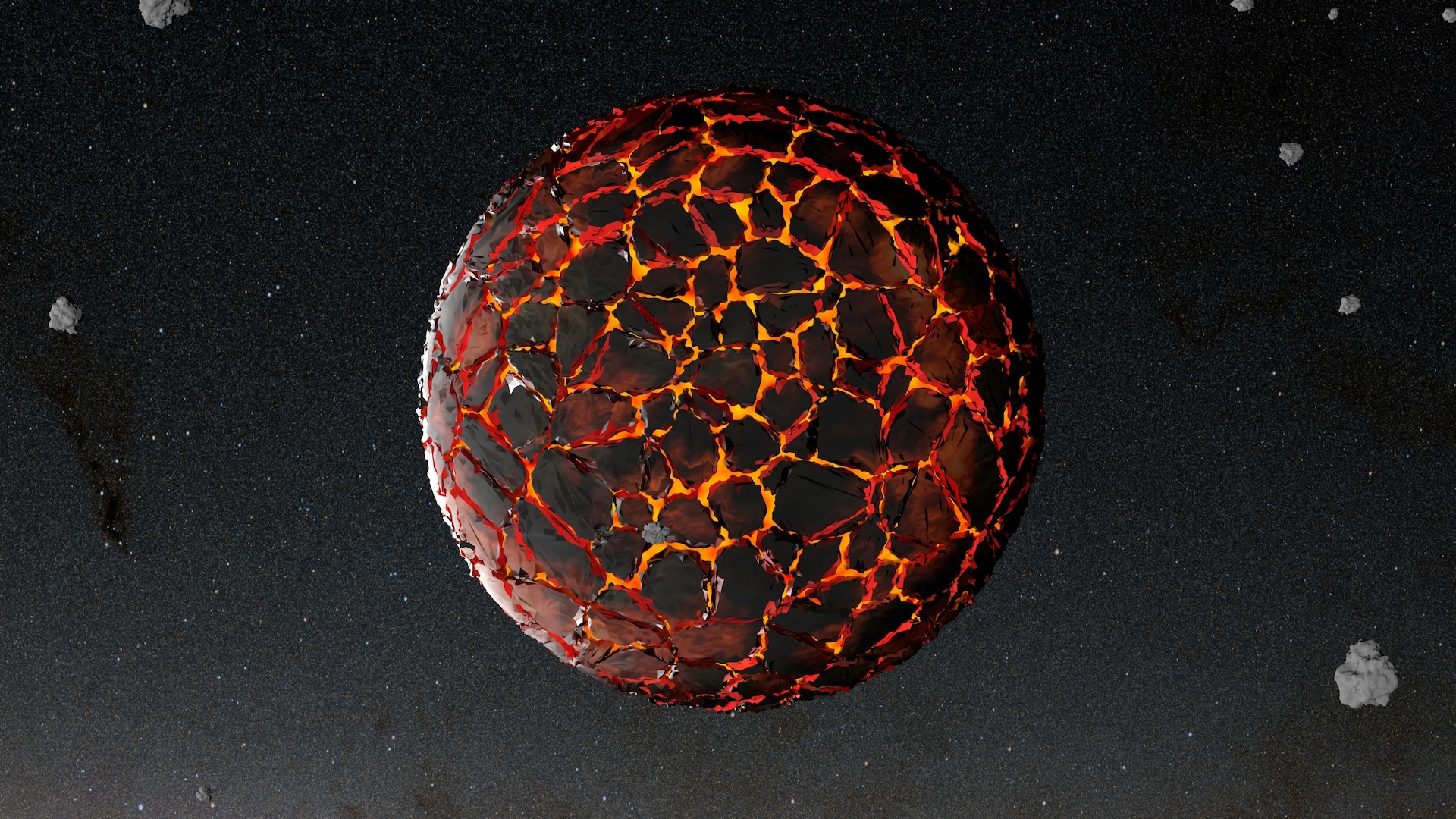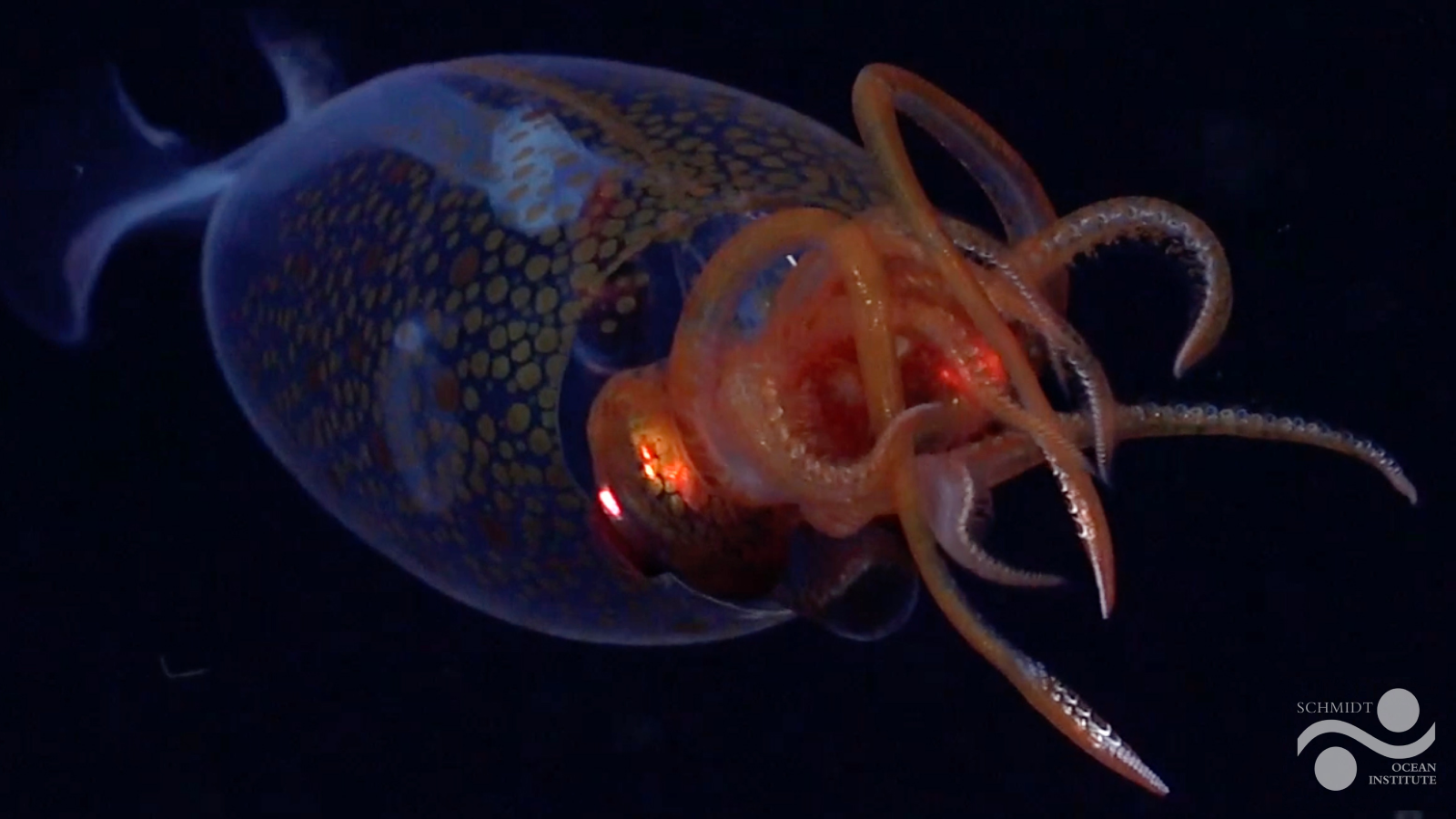Nuclear bomb detectors uncover secret population of blue whales hiding in Indian Ocean
Scientists found recordings of their unique song dating back almost 20 years.

Scientists have discovered an entirely new population of pygmy blue whales in the Indian Ocean, which have managed to evade detection for decades despite their enormous size.
Researchers uncovered the secretive cetaceans by analyzing acoustic data collected by an underwater nuclear bomb detection array, which revealed a unique song scientists had never heard before.
The new population of pygmy blue whales (Balaenoptera musculus brevicauda) — a smaller subspecies of blue whale that reaches a maximum length of 79 feet (24 meters) — is now called the Chagos population, after a group of islands in the Indian Ocean near the group's lair.
Related: Whale album: Giants of the deep
"We are still discovering missing populations of the largest animal that has ever lived," senior author Tracey Rogers, a marine ecologist at the University of New South Wales (UNSW) in Australia, told Live Science. "It's a testament to the difficulty of studying life in the ocean."
Bomb detectors
"Blue whales are generally hard to find," lead author Emmanuelle Leroy, a postdoctoral fellow at UNSW, told Live Science. "They were brought to the edge of extinction by industrial whaling and they are recovering very slowly."
Currently, about 5,000 to 10,000 blue whales exist in the Southern Hemisphere, compared with the pre-whaling population of about 350,000 there, according to the Center for Biological Diversity. The few that remain are often solitary and are spread across large geographic areas, making them easy to miss, Leroy said.
Sign up for the Live Science daily newsletter now
Get the world’s most fascinating discoveries delivered straight to your inbox.

"The best way to study them is through passive acoustic monitoring," Leroy said. "But this means that we need to have hydrophones recording in the different parts of the ocean."
In the Indian Ocean, in particular, there are limited scientific acoustic arrays set up. So the team turned to underwater nuclear bomb detectors belonging to the Comprehensive Nuclear-Test-Ban Treaty Organization (CTBTO) — an international group that uses a global underwater acoustic relay network to detect illegal nuclear bomb tests in the oceans. This gave the researchers access to a long-term dataset of noises across the Indian Ocean.
"The CTBTO data is an important international asset," Rogers said. "I think it's cool that the same system that keeps the world safe from nuclear bombs is available to researchers and allows a host of scientists, including us, to do marine science that would not be possible without such sophisticated hydroacoustic arrays."
A distinct song
"This new whale song has been a dominant part of the soundscape in the Central Equatorial Indian Ocean for the past nearly 18 years."
Tracey Rogers
After analyzing the data, the researchers discovered a particular blue whale song that had not previously been heard before.
"Blue whale songs are very simple in the way that they are the repetition of the same pattern," Leroy said. "But each blue whale subspecies and population has a different song type."
In general, blue whale songs are long, have a low frequency — sometimes below what humans are capable of hearing (below 20 hertz) — high intensity and are repeated at regular intervals. But different groups of whales have calls that differ in duration, structure and the number of distinct sections.
The Chagos song, belonging to the new pygmy population, has three sections, the first of which is the most complex, followed by two basic parts.
"This new whale song has been a dominant part of the soundscape in the Central Equatorial Indian Ocean for the past nearly 18 years," Rogers said. Because of the song's prevalence, the researchers are confident that the song belongs to an entirely new population and not just a few lone individuals. However, the exact size of this new population remains a mystery.
"Unfortunately, we have no idea of the pygmy blue whale population's size," Leroy said. "Acoustic [surveys] cannot give us this information yet."
Another one
"Finding a new population of pygmy blue whales in the Southern Hemisphere is exciting," Rogers said. "It increases the global population that we did not realize was there before."
Visual identification is still needed to definitively confirm the existence of the Chagos population, but the researchers are confident that this will only be a matter of time.
In December 2020, another study using acoustic surveys, of which Rogers and Leroy were co-authors, uncovered another new population of blue whales near Oman.
"This now takes us to five pygmy blue whale populations in the Indian Ocean," Rogers said, making the area a hotspot for the subspecies.
These discoveries "would not have been possible" without acoustic surveys, Rogers said.
The study was published online April 22 in the journal Scientific Reports.
Originally published on Live Science.

Harry is a U.K.-based senior staff writer at Live Science. He studied marine biology at the University of Exeter before training to become a journalist. He covers a wide range of topics including space exploration, planetary science, space weather, climate change, animal behavior and paleontology. His recent work on the solar maximum won "best space submission" at the 2024 Aerospace Media Awards and was shortlisted in the "top scoop" category at the NCTJ Awards for Excellence in 2023. He also writes Live Science's weekly Earth from space series.









